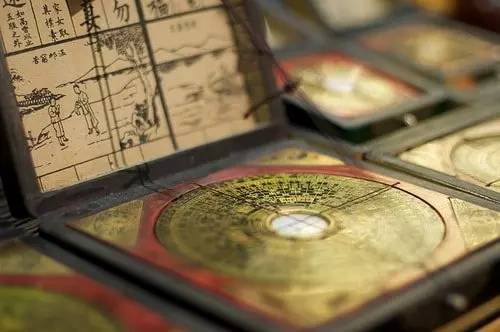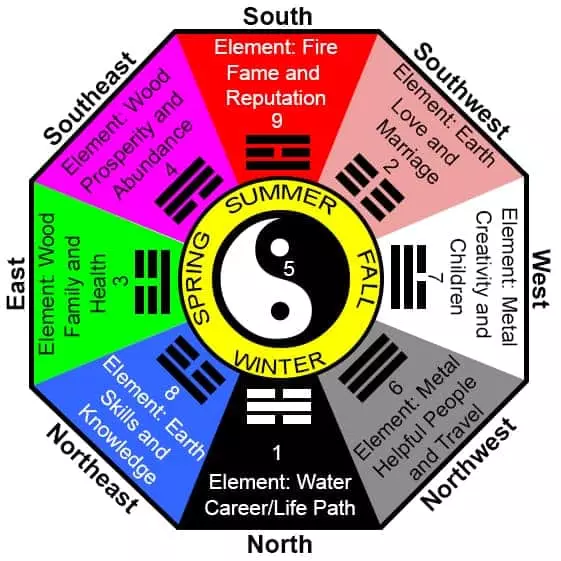I bet you've come across countless articles on Feng Shui that left you feeling more confused than ever. One source tells you one thing, while another contradicts it. It's no wonder you're perplexed. But fear not! Feng Shui doesn't have to be a head-scratcher. In fact, by understanding a few fundamental principles, you can start to make sense of it all.
In this beginner's guide, we'll unravel the mysteries of Feng Shui and provide you with the essential knowledge to navigate this ancient practice. Whether you're new to Feng Shui or have some prior knowledge, our goal is to provide you with enough information to understand the basics and empower you to explore further if you wish.
Getting One Feng Shui Rule Right does NOT Bring Good Feng Shui
Let's debunk a common misconception right from the start. Feng Shui is not about finding a silver bullet solution that magically transforms your life. It's about considering the whole picture. You need to assess your entire space, including its surroundings. This is where the Form School of Feng Shui comes into play.
Form School: Roads, Rivers, Mountains, Objects, and Structures
The Forms in Feng Shui refer to the physical objects and structures in and around your home. Think mountains, rivers, roads, and even electric poles. These elements can either enhance or disrupt the flow of energy, or Qi, in your space. For example, buildings that cut through the line of sight from your front door or a knife-shaped road can have negative implications. On the other hand, a layered mountain range facing your home can bring positive energy.
 Caption: Layered mountains is a good form in Feng Shui when the proper setup is used.
Caption: Layered mountains is a good form in Feng Shui when the proper setup is used.
Compass School: Directions and Compass Measurements
The Compass School focuses on the eight cardinal directions and their correlation with different aspects of life. There are various approaches within this school, leading to different practices and sometimes conflicting advice. The Luo Pan compass is commonly used in Compass School Feng Shui to determine orientations.
 Caption: A Luo Pan is commonly used to practice Feng Shui. The center of the Luo Pan is where the compass is located.
Caption: A Luo Pan is commonly used to practice Feng Shui. The center of the Luo Pan is where the compass is located.
The Bagua Map is a popular tool used in Classical Feng Shui. It divides your space into different quadrants, with each quadrant representing a specific aspect of life, such as career, relationships, or health. While different schools may have their variations, the Bagua provides a general framework for understanding the energy flow in your environment.
The Five Elements: Colors, Shapes, and Material
The Five Elements theory is a fundamental concept in Feng Shui. These elements - Earth, Water, Fire, Metal, and Wood - represent different natural objects and their qualities. They are associated with specific colors, shapes, and materials. The interaction between these elements influences the Qi in your space.

Practitioners use the Five Elements to enhance or balance the energy in a given area. For instance, if a particular space is associated with the Water element, you may introduce objects or colors related to Wood to weaken that area's energy. However, it's important not to get too carried away with these associations.
Avoiding the Inauspicious is Priority
When it comes to Feng Shui, it's crucial to prioritize avoiding the inauspicious over chasing after the auspicious. For example, it's better to avoid buying a house situated at the end of a T-junction, which is widely considered bad Feng Shui. Mixing good and bad energies can have detrimental effects, just like mixing polluted water with clean water. It's always a win to have neutral Feng Shui in such situations.
Consider the Historical Context
Feng Shui originated thousands of years ago in ancient China. Some of the rules and principles should be reevaluated based on the historical context. For example, the belief that a front door facing the kitchen is bad Feng Shui might be outdated, considering the significant differences between ancient and modern kitchens. It's important to adapt these concepts to fit our contemporary lifestyles.
 Caption: This image depicts a kitchen in ancient China, which is vastly different than the ones we have today.
Caption: This image depicts a kitchen in ancient China, which is vastly different than the ones we have today.
Details Tell You Exceptions to Feng Shui Rules
Feng Shui is a complex practice, and one rule does not fit all situations. Details matter. For instance, it may not be necessarily bad Feng Shui if your front door opens to a set of stairs. Factors like the distance between the stairs and the front door, as well as the frequency of use, need to be taken into account. Similarly, not all T-junctions are bad Feng Shui by default.
Conclusion
This beginner's guide is just the tip of the iceberg when it comes to Feng Shui. It's intended to provide you with a basic understanding of the principles involved. If you're truly passionate about Feng Shui, consider taking beginner classes or engaging with Feng Shui masters for further guidance.
Share your own journey and experiences with Feng Shui in the comments below. We'd love to hear from you!













